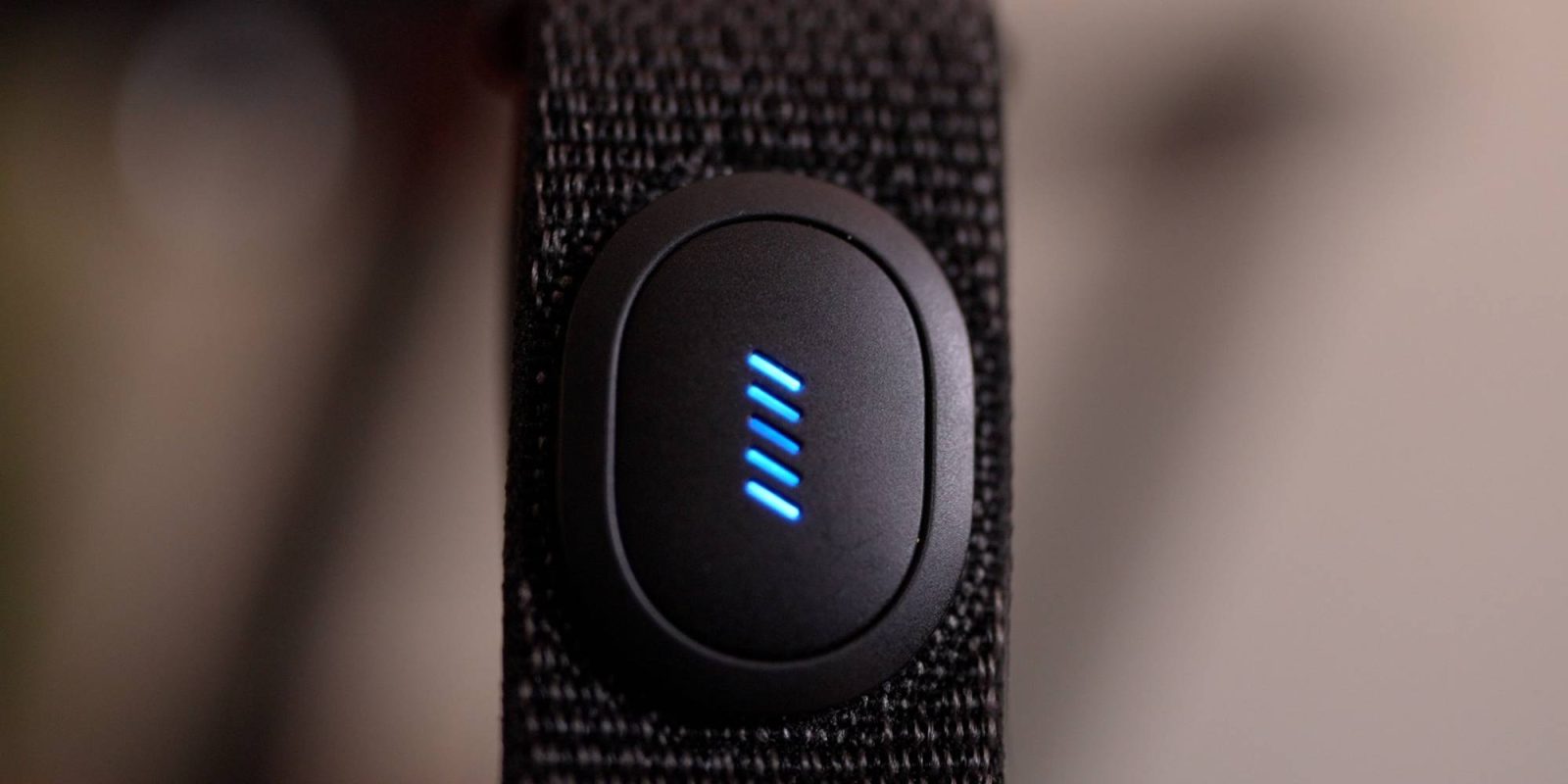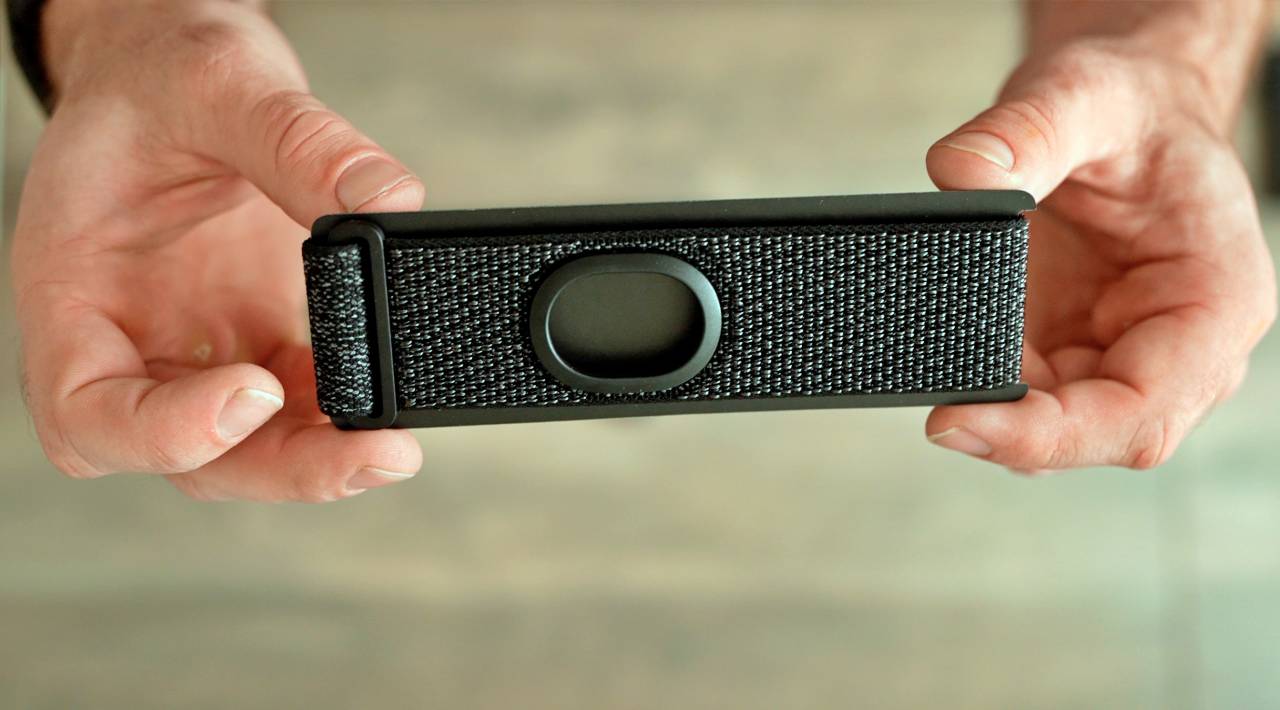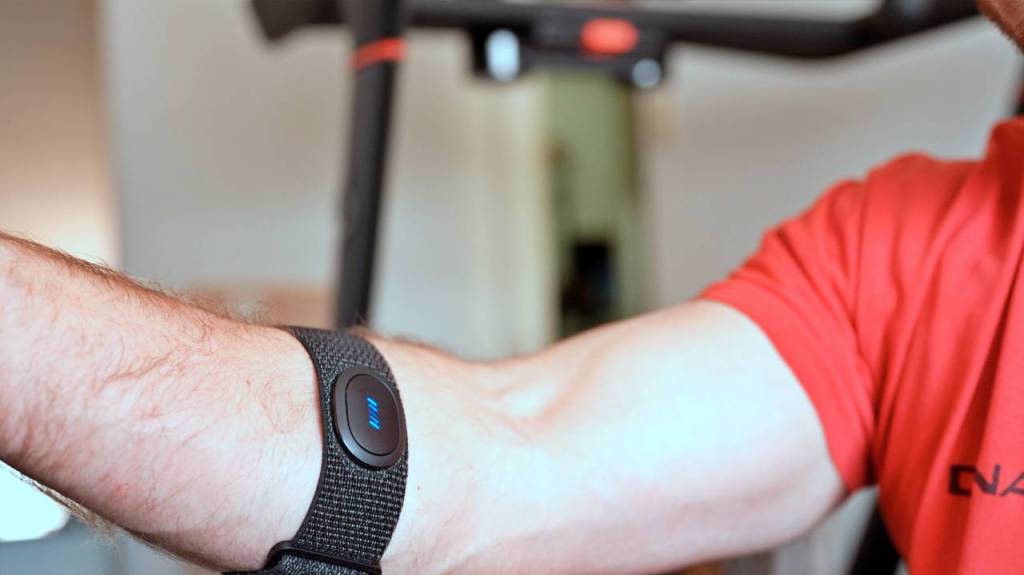
Today we take a hands-on look at the new Peloton Heart Rate Armband. Peloton’s previous heart rate monitor was well known to be a cheap, poorly made device (which they still sell for $34). However, this new Peloton armband is strong step in the right direction. You can easily tell that there is a similar design philosophy as used in the recent Peloton Guide.
Table of contents
Peloton Heart Rate Band hands-on and unboxing video
Subscribe to Connect The Watts for more connected fitness news, updates, tips, and guides
Peloton Heart Rate Band design
Opening up the nicely packaged Peloton Heart Rate Band, you’ll find a:
- Heart Rate Pod
- Magnetic Charger + USB Adapter
- Knit fabric Arm Band
Everything here really has that Peloton high-quality feel to it from the lights on the pod, the knit fabric arm band, and even the charger itself are all very well made.
The pill-shaped Pod pops easily in and out of the included arm band, which you will need to do in order to place it on the charger. The charger itself is magnetic, which makes connecting to it very easy and helps keep the pod secured.
The charger is USB-C but Peloton has also included a USB adapter. This is a nice touch and well appreciated by me since my desk where it charges only has USB ports.
The knit fabric armband itself looks great; the material is very similar to the outside fabric of the recently released Peloton Guide. With a soft grippy material within the inside of the band, it also feels as good as it looks.



How to use the Peloton Heart Rate Band
The Peloton Heart Rate Band uses bluetooth to connect with various devices. I tested this with a large variety of both Peloton and non-Peloton equipment, and it worked great in all cases.
However, unlike comparable heart rate bands, there is no ANT+ support here. This may not be a concern for most Peloton users, but it is one of the few drawbacks I have found with it so far.
To connect, you simply press the Pod once. The Pod will display a rough estimation of its battery life and then proceed into pairing mode. Once connected, the Peloton Heart Rate Band gives both vibration and visual feedback let to inform you of your current heart rate zone.
The visual feedback is really one of the standout features here. Displaying your heart rate zone by color has been done before, but never designed in a way that looks this nice.


Peloton Heart Rate Band size & fit
Peloton’s Heart Rate Band comes in two sizes: small and large. To find out which size is best for you, Peloton suggests you measure the circumference of your forearm 3 to 4 finger-widths below your elbow crease.
- 7.5 to 10.5 inches, order the Small.
- 10.5 to 13.5 inches, order the Large
The band is around 1.5″ in width, which may be a little wide for those with smaller arms. However, I think in most cases, it will be very comfortable to wear.
The band uses velcro strips and is very easy to adjust. Even during workouts, it can be adjusted with very little issues or concern of it sliding off.
The band placement further up the arm is ideal for a wide variety of workout types. This is especially true for strength and boxing workouts, where heart rate monitors worn on the wrist tend not to work well.

Peloton Heart Rate Band accuracy and battery life
I tested the Peloton Heart Rate Band against the Apple Watch, WHOOP, and COROS. It stayed very accurate for me, although be aware accuracy does vary depending on arm size and skin type. I was very happy to find it had no issues conturing to track during each of my strength and boxing workouts.
For battery life, Peloton claims the band offers up to 10 hours on a single charge. I used it for multiple workouts and severals hours, and so far, that number seems about right.
The is another area with the Peloton Heart Rate Band does fall short compared to similarly priced competitors. For example, the Wahoo TICKR FIT Armband boasts a 30 hour battery life (and has ANT+ support).
However, given that the vast majority of people will only use this heart rate band for 5-10 hours per week, the battery life life seems acceptable.
Peloton Heart Rate Band final thoughts
Overall, I think if you have a Peloton (or really any other connected fitness equipment), this is easily one of the best heart rate bands you can buy for under $100.
If you want the ANT+ support, or one with a stronger battery life, there are several other options (like the Wahoo TICKR FIT) that may be a better functional fit.
For most, though, especially Peloton users, I highly recommend the Peloton Heart Rate Band.

Suggested articles:
- Peloton Guide: In-depth review
- I bought every Peloton bike fan… here’s the best one!
- 13 must-have accessories for your new Peloton Guide
FTC: We use income earning auto affiliate links. More.


Comments